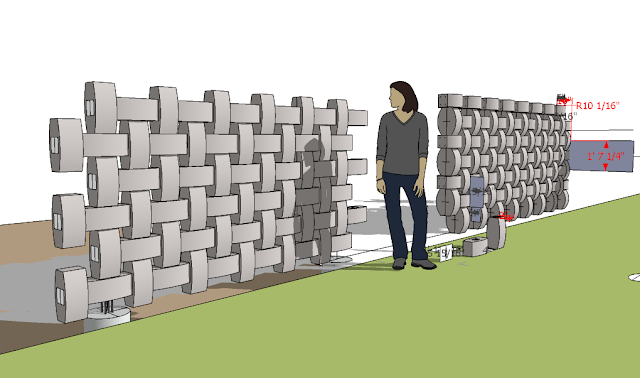Test pieces

In order to create the shadowboxed voids between the dentils I cut some pre-fabricated foam insulation to the interval that matches existing, and betters it a little with an evenness. It is odd to find all the straight runs of dentils in the courtroom 1-3/4" wide, where the ones on the pilaster cornices run anywhere from 1-7/8" to 2-1/2". With 17 dentils in 47 inches the mathe works out as approximately 25/32" spaces, and 2-1/16" dentils. On practical layout I find I have to fudge a bit where the widest discrepancy is 1/16 of an inch between some of them, something I am sure will not be discernable. Still, in doing this work I am diligent in making sure these spacers will be square and regular, and largely devoid of defects. The first casting of this piece will probably destroy the dentil spacers in the course of de-moulding, but they are easy enough to re-create, if a bit tedious. I am told there is a machine that can cut styrofoam to regular proportions with a hot wire mounted to a small table like a bandsaw, but for now it is all done with a combination square and a large Olfa blade. The pieces are then glued onto the same size plywood used to block the dentils off during the mouldmaking process. Noticable defects are filled in with plastelina clay and the whole assembly gets a coat of sealer and wax.
The interior fence goes up 5-1/2" with a little easing to fit on top of the Bead an Ogee mould. I am a little stifelled with how I am going to approach spraying the plaster underneath the top ledge. I think I wil resort to the old fashioned method of splattering small batches with a cleaning brush until I can trowel on the more structural type plaster behind the face mix.




Comments
Post a Comment